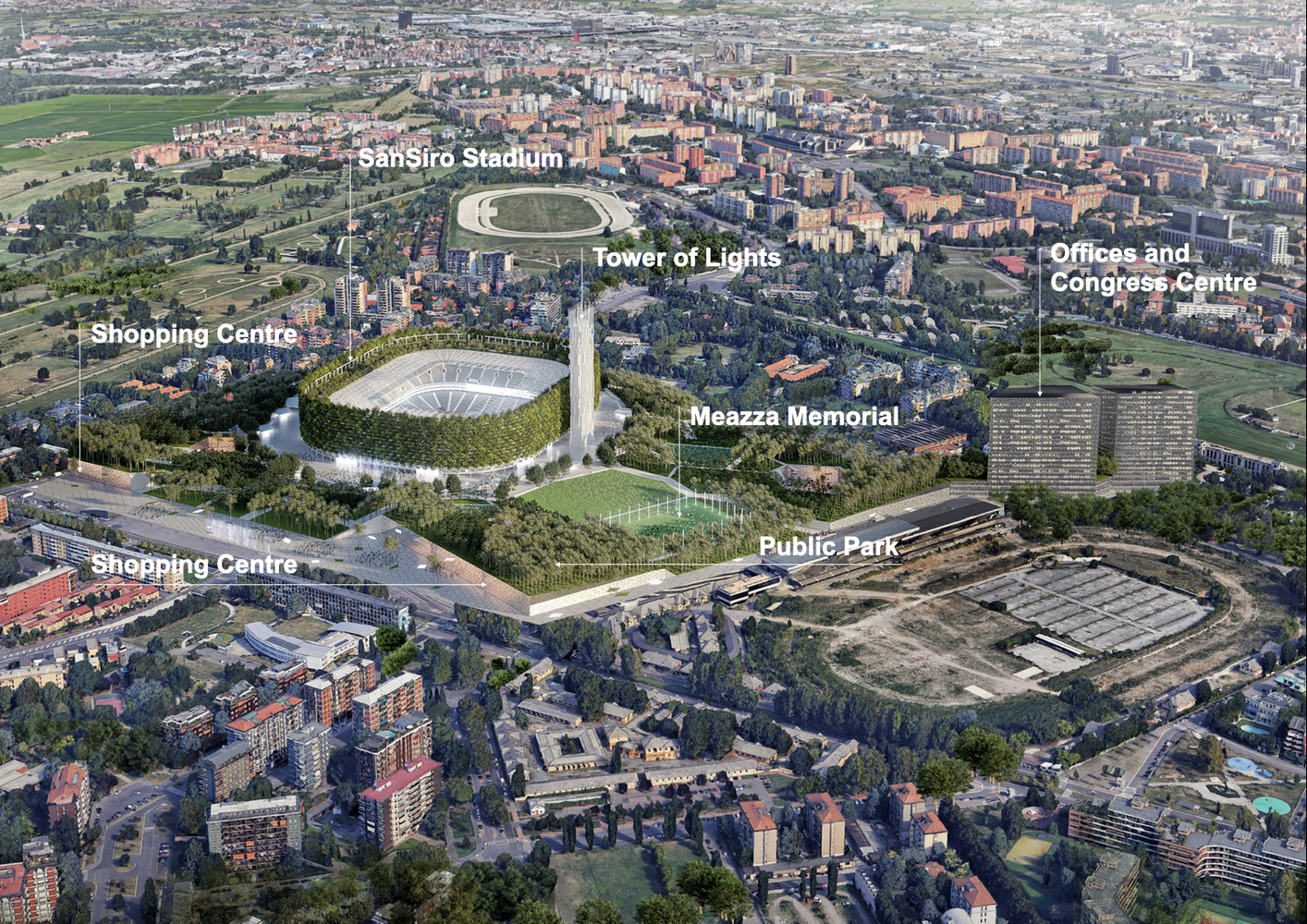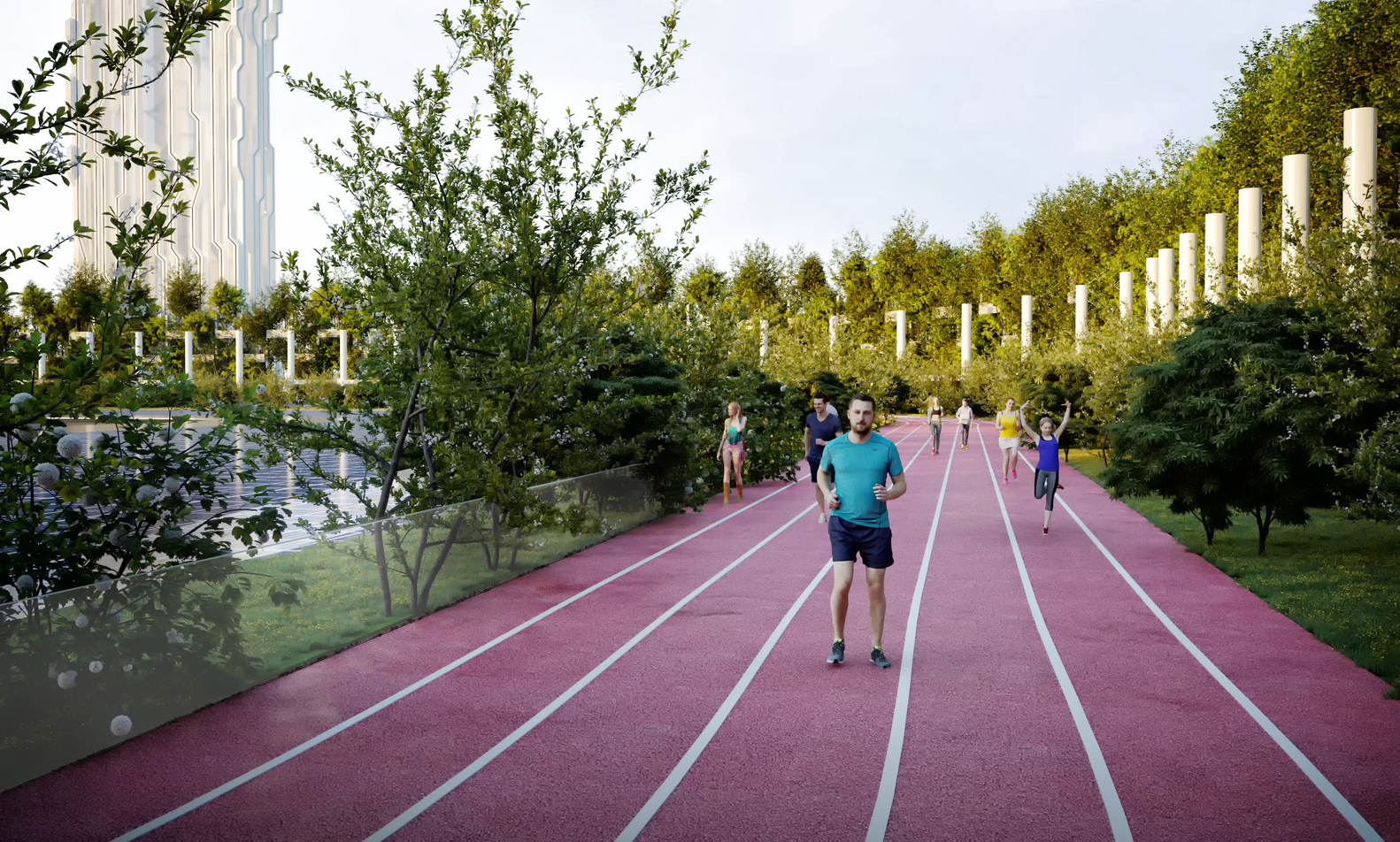
©Stefano Boeri Architetti

©Stefano Boeri Architetti

©Stefano Boeri Architetti

©Stefano Boeri Architetti

©Stefano Boeri Architetti

©Stefano Boeri Architetti

©Stefano Boeri Architetti

©Stefano Boeri Architetti

©Stefano Boeri Architetti

©Stefano Boeri Architetti
Project: International Forest Stadium
Architects: Stefano Boeri Architetti
Location: Milan, Italy
Interior Design: Fabio Novembre
Structural project, MEP, Sustainability, Bowl Design: ARUP
Landscape Design: Michel Desvigne Paysagiste
Agronomist: Studio Laura Gatti
Show Design: Balich Worldwide Shows
Graphic Project: 46xy - Mario Piazza, TOMOTOM
Sport e Salute SPA
Stefano Boeri Architetti, together with a multidisciplinary team including ARUP, Fabio Novembre, and Balich Wonder Studio, has unveiled the design for the new Milan Stadium, named the International Forest Stadium. The project, located in the San Siro area of the city, was presented to the public on the occasion of the competition announced in 2019 by the Inter and Milan teams. The stadium is envisioned as an integral part of the “Sport and leisure district” system, an extensive masterplan measuring over 800 hectares, planned to transform the San Siro district into a center for excellence in the context of European sports.
A pivotal element of the project is the relocation of the Patroclus tunnel, an effort that would allow the new stadium to be built in the middle of a 4.5-hectare urban park, adequately distanced from the residences planned for the area. The project is designed to include public and semi-public services in addition to sports facilities. These consist of offices, a hotel, conference centers, and commercial spaces, all aimed at enhancing the functional mix of the area and encouraging continued use of the building.
The distinctive characteristic of this stadium is represented by the forest concept, in which trees and abundant vegetation surround the pitch and the stands, integrating nature and the urban landscape into the football experience. The building is designed to host 5,700 square meters of horizontal green roofs, 7,000 square meters of green façades with 3,300 trees, and 56,300 shrubs of 70 different species. This “urban forest” is expected to absorb 162 tons of CO2 every year, help clean the air, absorb fine dust, and locally lower temperatures by reducing the urban heat island effect. Photovoltaic surfaces and the careful study of water and waste management complete the image of an energy-self-sufficient and environmentally friendly arena.
Inside the stadium, the internal distribution of functions is dictated by the flow of spectators, employees, sportspeople, visitors, and VIPs. Every category of users has designated spaces and circulation paths so that the internal organization is accessible and easy to navigate while being kept separate from other types of users. Some of the functions within the stadium are designed to be accessible to the local community, including commercial areas, museum spaces, gyms, bars, and restaurants. The running track located on the top level offers users a place to walk and train. The Tower of Light, the luminous landmark for the Milanese teams, changes color depending on the team on the pitch, emphasizing the “One stadium for Two” model.
The surrounding park is designed to honor the history of the current Meazza Stadium. For this reason, the project includes a memorial open to the public, where stories, legends, and memories can be collected and shared. This initiative, along with the renewed relationship between the stadium and nature and the integration of public functions aims to transform the new arena into a new landmark for experiencing sports architecture in the city.
Source: Stefano Boeri Architetti
milimetdesign – Where the convergence of unique creatives
































